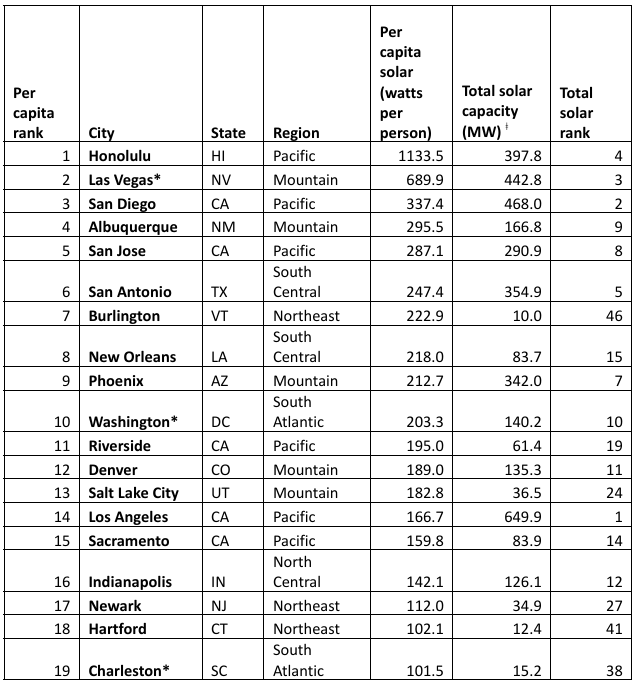Oklahoma House passes solar surcharge bill
Utility customers who want to install rooftop solar panels or small wind turbines could face extra charges on their bills after legislation passed the Oklahoma House of Representatives on Monday.Senate Bill 1456 passed 83-5 after no debate in the House. It passed the Senate last month and now heads to Gov. Mary Fallin for her approval.
The bill was supported by the state's major electric utilities, but drew opposition from solar advocates, environmentalists and others. It sets up a process at the Oklahoma Corporation Commission to establish a separate customer class and monthly surcharge for distributed generation such as rooftop solar or small wind turbines.
Customers who already have those systems installed wouldn't be affected by the bill. It also wouldn't apply to electric cooperatives, which aren't regulated by the Corporation Commission . The new tariffs for distributed generation would start by the end of 2015.
Representatives of Oklahoma Gas and Electric Co. and Public Service Co. of Oklahoma said the surcharge is needed to recover some of the infrastructure costs to send excess electricity safely from distributed generation back to the grid. The representatives said utilities need the new surcharge to prevent customers who can't afford the installation costs of distributed generation from subsidizing customers who have the systems installed.
"This neither unfairly advantages or disadvantages a class of customers," said PSO spokesman Stan Whiteford .
"It levels the playing field where one customer class was subsidizing another."
Solar advocates and others said the bill protects utility profits by opening up another revenue stream for them. The number of OG&E and PSO customers who have distributed generation in Oklahoma is small, but the declining costs of solar panels and a federal tax credit could make the systems more attractive.
SB 1456 was authored by Sen. A.J. Griffin , R- Guthrie , and sponsored by Rep. Mike Turner , R- Edmond .
http://www.altenergymag.com/news/2014/04/04/statement-from-dwea-executive-director-on-oklahoma-senate-bill-1456-/32967
Statement from DWEA Executive Director on Oklahoma Senate Bill 1456
Visit http://distriubtedwind.org for further information
April 3rd – Distributed Wind Energy Association Executive Director Jennifer Jenkins issued the following statement today as Senate Bill 1456, a bill that would add a new surcharge for distributed generation moved through a House subcommittee:
Submitted on 04/04/14, 07:55 AM
FOR IMMEDIATE RELEASE
April 3, 2014
FOR MORE INFO: Lauren Glickman
Email: Lglickman@distributedwind.org
Tel: 504-258-7955
April 3rd – Distributed Wind Energy Association Executive Director Jennifer Jenkins issued the following statement today as Senate Bill 1456, a bill that would add a new surcharge for distributed generation moved through a House subcommittee:
"It's disappointing to see Senate Bill 1456 moving forward in Oklahoma. This legislation does nothing but jeopardize renewable energy growth in the state. Distributed forms of energy generation like small and community wind and solar power help to keep the lights on and Oklahomans at work. The state legislature should be examining legislation that will support this growing industry, and utilities should be encouraging distributed generation instead of trying to penalize it."
DWEA's president, Mike Bergey, president & CEO of Bergey Windpower in Norman, OK added: "It is unfortunate that some utilities that enthusiastically support wind power for their own use are promoting a regressive policy that will make it harder for their customers to use wind power on their own. Oklahoma offers tax credits for large wind turbines which are built elsewhere, but wants to penalize small wind which we manufacture here in the state? That makes no sense to me. The truly ironic thing is that net metering, a standard policy in 42 states, saves utility administration costs and, because so little small wind and solar capacity is installed in Oklahoma, implementing SB 1456 through the Corporation Commission would cost ratepayers and taxpayers $5 for every $1 that it could theoretically save the utility."
###
About the Distributed Wind Energy Association
The Distributed Wind Energy Association is a collaborative group comprised of manufacturers, distributors, project developers, dealers, installers, and advocates, whose primary mission is to promote and foster all aspects of the American distributed wind energy industry. Distributed wind is the use of wind turbines at homes, farm and ranches, businesses, public and industrial facilities, off-grid and other sites connected either physically or virtually on the customer side of the meter to offset all or a portion of local energy consumption or to support grid operations. DWEA seeks to represent members and associates from all sectors with relevant interests pertaining to the distributed wind industry. For more information on DWEA, please go to www.distributedwind.org. Follow us on Twitter @DWEA and like us on Facebook








